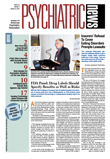One of the major behavioral abnormalities displayed by individuals with autism—a reluctance to interact with other people—appears to be related to that almond-shaped danger-detector deep in the brain, the amygdala.
The linking of autism's aloofness to the amygdala was made by a team of scientists at the University of Wisconsin-Madison's Waisman Laboratory for Brain Imaging and Behavior. The lead investigator was Brendon Nacewicz, and the senior investigator was Richard Davidson, Ph.D.
“To our knowledge, we report the first relationship between amygdala structure and... social impairment in autism,” the researchers wrote in their article, which appeared in the December 2006 Archives of General Psychiatry.
The researchers studied 54 subjects— 28 males aged 8 to 25 with autism or an autism-spectrum disorder and 26 age-matched males with no known psychiatric disorders. Subjects were evaluated for a type of social behavior that individuals with autism were already known to perform poorly—making eye contact with other people. In this case, subjects were evaluated for their willingness to make contact with the eyes of photographed human faces. As expected, the autistic group performed worse on average than the control group.
The researchers also measured the size of the amygdalae in the brains of the autism and control groups. They found that the amygdalae were significantly larger in the control group than in the group with autism.
After that, the scientists looked for a potential link between eye-contact test performance and the size of the amygdalae within each group.
Small Amygdala, Less Eye Contact
Amygdala size was not significantly linked with the control group's willingness to make eye contact, but it was significantly linked with the autism group's. In fact, the smaller an autistic subject's amygdalae, the less time he or she spent making eye contact.
Thus, the amygdalae in individuals with autism seem to be abnormally small compared with the amygdalae in mentally healthy persons, and their abnormally small amygdalae in turn appear to be linked with their difficulty in making eye contact.
What the connection between a smaller-than-normal amygdala and difficulty in making eye contact means, though, is not clear.
For example, might an abnormally small amygdala slow an autistic person's ease in making eye contact? Or might difficulty in making eye contact shrink the amygdala? The researchers tend to favor the latter explanation. What they think may be happening is that autistic children's fear of socializing affects the amygdala, so that it at first expands abnormally, but then shrinks abnormally. Indeed, a study of 3- and 4-year-old boys with autism found that their amygdalae were abnormally large for their age, whereas in this inquiry, individuals with autism who were older than age 13 had abnormally small amygdalae for their age.
Link May Be Inherited
In any event, the link between a small amygdala and trouble in making eye contact in individuals with autism may well be inherited, another study conducted by this group at the Waisman Laboratory and in press with Biological Psychiatry suggests. The lead investigator in this inquiry was Kim Dalton, Ph.D., a research scientist at Waisman.
Relatives of individuals with autism often show milder indications of the social deficits that individuals with autism possess—say, reluctance to make eye contact with other people—suggesting that such deficits are inherited. So with this in mind, Dalton and her colleagues tested not only 12 subjects with autism or autism spectrum disorder, but 10 of their nonautistic siblings for their willingness to make eye contact with eyes on photographed human faces. The scientists then compared the results for both groups with those from 12 healthy control subjects. Both the autistic subjects and their siblings were found to spend significantly less time than the control subjects in making eye contact.
The researchers then measured the size of the amygdalae in all three subject groups and compared results for the three groups, taking age differences into consideration. The sibling group showed a significant reduction in amygdala size compared with that of the control group—a reduction that was nearly identical to that of the autism group.
Taken together, “these results provide the first evidence linking objective measures of social impairment and amygdala structure...in autism,” Davidson concluded in an accompanying press release by the National Institute of Mental Health. “Finding many of the same differences, albeit more moderate, in well siblings helps to confirm that autism is likely the most severe expression of a broad spectrum of genetically influenced characteristics.”
The two studies were funded by Studies to Advance Autism Research and Treatment, National Alliance for Research on Schizophrenia and Depression, National Alliance for Autism Research, and National Institutes of Health.
An abstract of “Amygdala Volume and Nonverbal Social Impairment in Adolescent and Adult Males With Autism” is posted at<http://archpsyc.ama-assn.org/cgi/content/abstract/63/12/1417>.An abstract of “Gaze-Fixation, Brain Activation, and Amygdala Volume in Unaffected Siblings of Individuals With Autism” is posted at<www.journals.elsevierhealth.com>.▪
